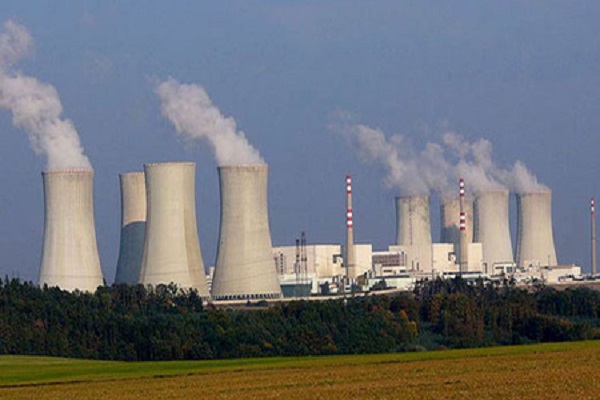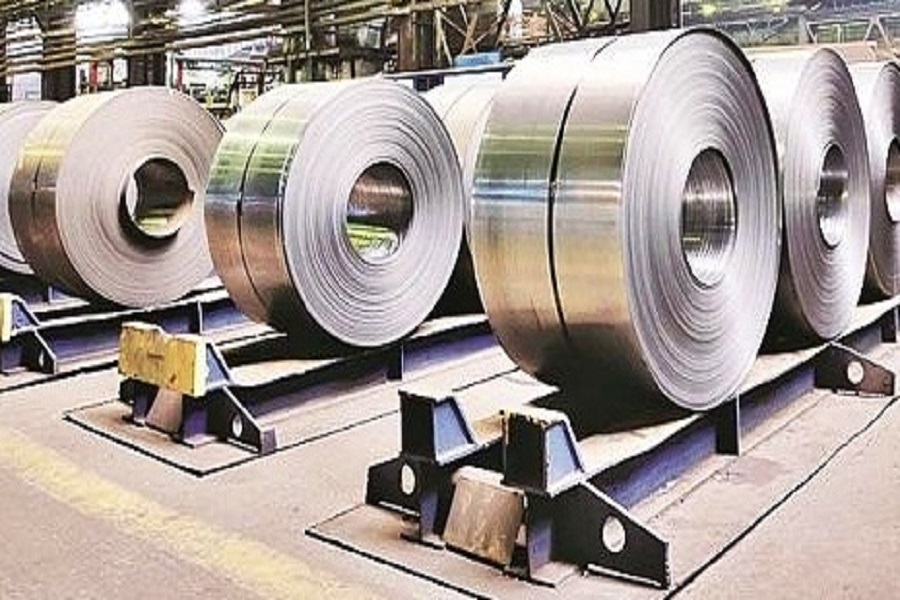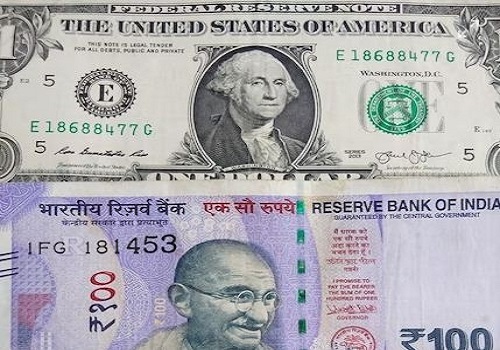Jeera trading range for the day is 20500-21060 - Kedia Advisory

Gold
Gold prices edged marginally lower by 0.07% to settle at 95,536 as traders opted for profit booking following a recent rally. A mild recovery in the U.S. dollar index, which climbed to 99.7 after three days of losses, contributed to the pressure on bullion. However, long-term fundamentals for gold remain intact, supported by ongoing concerns about U.S. fiscal health, particularly after Moody’s downgraded the U.S. sovereign credit rating over the mounting $36 trillion debt burden. Speculation around President Trump’s tax-cut bill and its potential to further inflate the deficit has also kept safe-haven demand alive. In physical markets, gold imports by China surged 73% in April to an 11-month high of 127.5 metric tonnes, boosted by rising demand and expanded import quotas amid trade tensions with the U.S. On the domestic front, Indian dealers were seen offering discounts of up to $34 an ounce, a notable increase from last week's $16, indicating subdued local demand. Conversely, China saw premiums ranging from $9 to $50, reflecting stronger consumer interest. Global demand trends were mixed in Q1 2025, with a 1% year-on-year increase to 1,206 metric tonnes driven by a 170% surge in investment demand. Technically, the market is witnessing long liquidation, indicated by an 8.04% drop in open interest to 9,678 contracts. Immediate support lies at 95,025, with a break below likely to test 94,520. Resistance is seen at 96,210, and a move above this could lead prices toward 96,890.
Trading Ideas:
* Gold trading range for the day is 94520-96890.
* Gold slipped as traders booked profits and the U.S. dollar index rebounded to 99.7.
* Moody’s downgraded U.S. credit rating, citing $36 trillion debt.
* China’s gold imports surged 73% in April to an 11-month high of 127.5 metric tonnes.
Silver
Silver prices declined by 0.46% to settle at 97,796, tracking weakness in industrial metals and underperforming gold. This dip was largely attributed to investor concerns over rising U.S. debt levels, which have pushed long-dated Treasury yields higher and dented sentiment in manufacturing-sensitive commodities like silver. U.S. policymakers advancing deficit-widening legislation, along with warnings from credit rating agencies, have raised macroeconomic risks. Additionally, trade tensions and potential tariffs are clouding the outlook for the photovoltaic industry—a major silver consumer—adding further downside pressure. Despite the near-term softness, silver’s long-term fundamentals remain strong. Industrial demand is forecast to reach a new record in 2025, driven by sustained growth in green economy applications. Silver industrial fabrication is expected to grow by 3%, surpassing 700 million ounces for the first time. However, total demand is projected to dip slightly by 1% to 1.20 billion ounces due to weaker jewelry and silverware demand, particularly in India, where high local prices are expected to trigger a double-digit decline. According to the Silver Institute, the global silver deficit is anticipated to narrow by 21% to 117.6 million troy ounces in 2025, as a slight increase in supply offsets the minor drop in demand. Technically, the market is under long liquidation, with open interest down by 3.23% to 16,788. Immediate support is at 96,505, below which 95,220 could be tested. Resistance is seen at 99,220, and a break above this could push prices toward 100,650.
Trading Ideas:
* Silver trading range for the day is 95220-100650.
*/ Silver fell, underperforming gold, as US debt concerns weighed on manufacturing-driven commodities.
* Rising US yields from deficit concerns pressured silver amid industrial metal pullback.
* China’s wind and solar capacity neared 1,500 GW, boosted by 60GW photovoltaic expansion.
Crude oil
Crude oil prices slipped by 0.57% to close at 5,265 amid renewed concerns of supply surplus as OPEC+ reportedly considers a production hike for July. Discussions ahead of the June 1 meeting include a potential increase of 411,000 barrels per day, which, if confirmed, could outpace demand growth and weigh further on prices. The sentiment was further dampened by bearish U.S. inventory data from the Energy Information Administration (EIA), which showed an unexpected rise in crude, gasoline, and distillate stocks for the week ending May 16. Crude inventories climbed by 1.3 million barrels, contrary to expectations of a drawdown, while gasoline and distillates saw respective increases of 816,000 and 580,000 barrels. Meanwhile, geopolitical developments also influenced the market, with the anticipation of the fifth round of nuclear talks between the U.S. and Iran easing fears of conflict-driven supply disruptions in the Middle East, particularly after reports of potential Israeli strikes on Iranian nuclear facilities. On the demand side, the International Energy Agency (IEA) revised its 2025 global oil demand growth forecast slightly higher to 740,000 bpd, up by 20,000 bpd from the previous outlook. Technically, the crude oil market is under fresh selling pressure with a 4.07% rise in open interest to 11,533 contracts. Support is pegged at 5,207, with a breach likely to test 5,149, while resistance is seen at 5,317 and higher at 5,369 if prices rebound.
Trading Ideas:
* Crudeoil trading range for the day is 5149-5369.
* Crude falls as OPEC+ mulls July output hike, raising oversupply concerns
* An output hike of 411,000 bpd for July is among the options under discussion
* EIA data showed U.S. crude and fuel inventories showed surprise stock builds last week
Natural gas
Natural gas prices fell sharply by 3.27% to settle at 280.9, pressured by a combination of weaker-than-expected output decline, reduced LNG export flows, and a robust storage build. Despite a drop in production in the Lower 48 U.S. states from a record 105.8 bcfd in April to 104.9 bcfd in May, the decline was not as steep as expected. Daily production even edged down to 104.4 bcfd, still higher than LSEG’s earlier outlook, dampening bullish sentiment. Additionally, flows to the eight major U.S. LNG export terminals averaged just 15.1 bcfd so far in May, down from April’s record of 16.0 bcfd, suggesting weaker export demand. Meteorologists forecast above-normal temperatures through early June, but overall gas demand is expected to ease from 100.0 bcfd this week to 96.1 bcfd next week, further adding to bearish pressures. Meanwhile, U.S. utilities injected 120 bcf of gas into storage for the week ending May 16, the largest weekly build since September 2022 and the biggest pre-summer increase since 2015. Longer term, the EIA projects record highs in both U.S. gas output and demand in 2025, with production reaching 104.9 bcfd and consumption rising to 91.3 bcfd. Technically, the market witnessed long liquidation with a sharp 13.27% drop in open interest to 9,307. Support is seen at 276.3, with a further decline potentially testing 271.8. Resistance is now at 287.6, above which prices may attempt 294.4.
Trading Ideas:
* Naturalgas trading range for the day is 271.8-294.4.
* Natural gas slips on mild output drop, lower LNG export flows this month.
* US utilities added 120 billion cubic feet of natural gas to storage
* Gas stockpiles were currently around 4% above the five-year (2020-2024) average.
Copper
Copper prices edged higher by 0.20% to settle at 859.2, supported by short covering after recent declines triggered by demand concerns and supply-side pressures. The rebound comes as investors adjusted positions following a drop driven by rising US bond yields and concerns about weakening global manufacturing demand. On the supply front, the International Copper Study Group (ICSG) doubled its global copper surplus forecast for 2025 to nearly 300,000 tonnes, reflecting strong ore output from South America. COMEX inventories surged to 169,664 metric tons, their highest in over six years, as traders redirected copper to the US in anticipation of potential tariffs under former President Trump's proposed import measures. This flow helped narrow the US-London copper price spread. Meanwhile, China's refined copper imports fell by 5% year-on-year in Q1 2025, and by 20% from the previous quarter, as global shipments favored the US. Inventory dynamics were mixed globally. LME copper stocks dropped to a 10.5-month low of 179,375 mt, while SHFE copper inventories jumped 34% to 108,142 mt during the week ending May 16. International inventories also rose over 24%, pointing to an increasingly ample market. From a technical perspective, copper saw short covering as open interest declined sharply by 14.96% to 2,330, while prices gained 1.75. Key support lies at 854.2, with further downside possible to 849. On the upside, resistance is at 863.5, and a break above may open the path to 867.6.
Trading Ideas:
* Copper trading range for the day is 849-867.6.
* Copper rises on short covering after demand fears and surplus hit prices
* Industrial inputs pulled back after the Federal government got closer to passing a bill that would increase its budget deficit.
* International Copper Study Group doubling its forecast on this year's surplus to nearly 300,000 tonnes.
Zinc
Zinc prices edged higher by 0.37% to settle at 260.45, supported by a sharp drop in the global market surplus and easing macroeconomic pressures. The International Lead and Zinc Study Group (ILZSG) reported a significant reduction in the global zinc surplus to 23,700 metric tons in March, down from 75,900 tons in February, reflecting tighter supply conditions. Meanwhile, risk sentiment improved as Sino-US trade tensions temporarily subsided, and China moved to stimulate its economy by cutting benchmark lending rates and lowering deposit rates through major state-owned banks. This macro relief helped limit downside pressure. However, market optimism remained cautious, with the upside capped by persistent concerns over global manufacturing headwinds and signs of easing supply bottlenecks. On the production front, China’s refined zinc output rose 1.6% month-on-month and 10% year-on-year in April, although cumulative growth for the January-April period came in at just 0.3% YoY—below expectations. Production was concentrated in provinces like Gansu, Qinghai, and Yunnan, while Hunan and Guangxi saw declines. Looking ahead, May’s refined zinc output is expected to rise marginally by less than 0.1% MoM and over 3% YoY, with cumulative output for the first five months forecasted to grow nearly 1% YoY. Technically, the market witnessed short covering as open interest dropped by 15.26% to 1,327, while prices gained 0.95. Zinc now finds support at 259.4, with further downside risk to 258.1. Resistance lies at 261.6, and a break above could push prices toward 262.5.
Trading Ideas:
* Zinc trading range for the day is 258.1-262.5.
* Zinc rises as global surplus shrinks to 23,700 tons in March from 75,900 in Feb.
* Support also seen as macro-driven risk aversion eased as Sino-US trade tensions temporarily subsided
* However upside seen limited amid persistent concerns over global manufacturing and easing supply constraints.
Aluminium
Aluminium prices declined by 0.65% to settle at 236.85, pressured by growing macroeconomic concerns including the rising US debt burden and a weaker global economic outlook. Despite the pullback, aluminium prices continue to find support from persistently low inventory levels. However, seasonal demand weakness and global macro headwinds are limiting the metal's upward momentum. On the global production front, primary aluminium output rose by 2.2% year-on-year in April to 6.033 million tonnes, according to the International Aluminium Institute (IAI). China, the world’s largest aluminium producer and consumer, recorded a 4.2% year-on-year rise in April production to 3.75 million tonnes. Over the January–April period, Chinese output grew by 3.4% to 14.79 million tonnes. These increases in supply are weighing on market sentiment, particularly amid lackluster factory output and retail sales growth in China, as well as continued stagnation in new home prices. Moreover, China's aluminium exports surged by 17% in the first ten months of the year, reaching nearly 5.5 million tonnes, further highlighting strong outbound flows. Meanwhile, Japanese port stocks rose 3.4% in April to 320,300 tonnes, indicating a build-up in regional inventories. Technically, the market witnessed long liquidation as open interest dropped by 15.14% to 1,519 while prices declined by 1.55. Aluminium now finds support at 235.9, with further downside likely toward 234.8. Resistance is seen at 238.8, and a break above this level could push prices toward 240.6.
Trading Ideas:
* Aluminium trading range for the day is 234.8-240.6.
* Aluminium fell amid rising U.S. debt concerns and weakening global economic outlook
* Global primary aluminium output in April rose 2.2% year on year to 6.033 million tonnes
* China's Jan–Apr aluminium production jumped 3.4%, pressuring market sentiment further
Cottoncandy
Cottoncandy prices edged higher by 0.3% to settle at 54,070 amid expectations of a further shrinkage in domestic crop output. The Cotton Association of India (CAI) revised its 2024–25 production estimate downward by 4 lakh bales to 291.30 lakh bales of 170 kg each, primarily due to lower yields in Maharashtra. This is a notable drop from the earlier projection of 295.30 lakh bales. India’s cotton exports for the 2024–25 season are projected to decline sharply to 16 lakh bales, compared to 28.36 lakh bales in the previous season. Meanwhile, cotton imports are expected to more than double to 33 lakh bales, driven by shrinking domestic production. Stocks at the end of March were pegged at 127.83 lakh bales, while the closing stock for the season ending September 2025 is expected to fall to 23.49 lakh bales from 30.19 lakh bales last year. On the global front, the U.S. cotton balance sheet for 2024/25 saw minor adjustments, with exports reduced by 100,000 bales and ending stocks raised by the same amount. World production also declined slightly due to cuts in Argentina and Cote d’Ivoire, despite higher output in China. Technically, the cotton market witnessed short covering, with prices rising 160 and open interest remaining flat at 148. Support is seen at 53,890, with a downside test possible at 53,700. Resistance is likely near 54,230, and a breakout could push prices toward 54,380.
Trading Ideas:
* Cottoncandy trading range for the day is 53700-54380.
* Cotton prices gained as CAI expects a shrinkage in crop.
* Cotton exports for the 2024-25 season are pegged at 16 lakh bales, lower by 12.36 lakh bales over previous year’s 28.36 lakh bales.
* The closing stock for 2024-25 season at end of September 2025 is estimated lower at 23.49 lakh bales from same period last year’s 30.19 lakh bales. I
* In Rajkot, a major spot market, the price ended at 25995 Rupees gained by 0.09 percent.
Turmeric
Turmeric prices declined by 1.49% to settle at 14,184, pressured by a surge in arrivals and subdued export inquiries. Daily arrivals jumped significantly to around 57,500 quintals from 29,860 quintals in the prior session, exerting downward pressure on prices. However, the downside remained limited due to persistent concerns over lower production and slower crop growth. Despite a 10% increase in the cultivated area this season—estimated at 3.30 lakh hectares versus 3 lakh hectares last year—productivity is expected to lag due to untimely rains. Turmeric output is projected to fall by 10–15%, especially in key growing regions like Nanded, where issues such as small rhizomes and crop rots are prevalent. At the Duggirala market, demand for the fresh crop remains robust, with buyers favoring newer stock over older inventory, which commands a price premium due to its superior quality. Roughly 50–55% of the new crop has already been traded, and with harvesting ongoing, steady arrivals are anticipated through June. Market activity continues to defy seasonal slowdowns. On the export front, turmeric shipments during April–February 2025 rose by 11.51% to 161,229.56 tonnes, compared to 144,585.64 tonnes during the same period the previous year. Technically, the market is under fresh selling pressure as open interest rose slightly by 0.09% to 15,880. Turmeric is currently finding support at 13,956, with a potential downside to 13,726. Resistance is seen at 14,464, and a move above this level could drive prices towards 14,742.
Trading Ideas:
* Turmeric trading range for the day is 13726-14742.
* Turmeric dropped due to increased arrivals and owing to weak export enquiries.
* However downside seen limited amid persistent concerns about lower production estimates.
* Yields expected 10–15% lower; Nanded region hit by crop rot and small rhizomes
* In Nizamabad, a major spot market, the price ended at 14489.95 Rupees dropped by -0.44 percent.
Jeera
Jeera prices edged lower by 0.34% to settle at 20,750, weighed down by muted domestic demand and weak export activity. Traders attributed the price drop to the end of the retail season and a lack of fresh buying interest from overseas markets. In addition, comfortable supply levels and subdued demand have led to increased downward pressure. Arrivals in major mandis surged to 32,900 bags from 28,000 in the previous session, amplifying the supply glut in the market. Despite the recent correction, the overall export trend remains positive. Jeera exports during April–February 2025 increased sharply by 62.55% to 195,164.58 tonnes, up from 120,062.66 tonnes during the same period in 2024. However, a month-on-month drop of 23.92% was noted in February exports compared to January 2025, indicating a temporary slowdown. Imports, on the other hand, plummeted by 93.70% to just 1,102.04 tonnes in the same period, suggesting strong domestic availability. The start of cumin sowing in Gujarat and Rajasthan was delayed by about a month due to unfavorable weather, but production is expected to remain stable year-on-year. Technically, the market is under fresh selling pressure, evidenced by a 0.27% rise in open interest to 6,594 contracts. Jeera finds immediate support at 20,630, with a further downside possible to 20,500. Resistance is seen at 20,910, and a breakout above that could push prices toward 21,060.
Trading Ideas:
* Jeera trading range for the day is 20500-21060.
* Jeera dropped due to lower buying and weak export demand.
* The current season is expected to have similar production levels as last year due to better crop conditions.
* In Feb 2025 around 12,996.88 tonnes of jeera were exported as against 17,083.31 tonnes in Jan 2025 showing a drop of 23.92%.
* In Unjha, a major spot market, the price ended at 21269.1 Rupees dropped by -0.28 percent.
Views express by all participants are for information & academic purpose only. Kindly read disclaimer before referring below views























